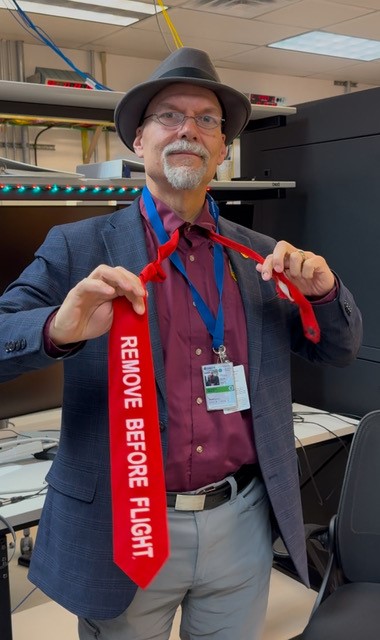









OVERVIEW
Imaging Almost Nothing At All … with the PUNCH mission!
Four orbiting spacecraft, built at San Antonio’s own Southwest Research Institute (SwRI), are scanning the cosmos to keep us safe … and to teach us about the strange “space weather” that affects us. Earth is bathed in a very tenuous “solar wind” that streams from the Sun, filling our solar system and sweeping over everything in it, including us. Disturbances in this flow cause space weather effects and “geomagnetic storms”, which can disrupt and damage our important technology, including power grids. The solar wind is so hot that it is a mixture of ionized atoms and free electrons – but there is very little material in it: just 5-50 atoms in every teaspoon of empty space (compared to 100 billion billion molecules in every teaspoon of air at sea level). The PUNCH mission is designed to photograph, map, and track the solar wind like geosynchronous weather satellites track hurricanes on Earth. It does this by imaging faint glimmers of sunlight, a thousand times fainter than the Milky Way, that are scattered by solar wind electrons in the nearly-empty void between planets. I’ll describe the strangeness of space weather and how it affects us, show some early results from PUNCH, and show one way that fundamental science and technology research – funded by NASA – are keeping America safe and prosperous.
Dr. Craig DeForest is the Director of SwRI's Department of Solar and Heliospheric Physics, and leads SwRI’s PUNCH mission for NASA. DeForest has studied the Sun and space weather for 35 years, 25 of them at SwRI. He is known for novel instrumentation and data analysis techniques, is a former Chair of the American Astronomical Society’s Solar Physics Division, and since 2011 has pioneered quantitative imaging of the solar wind and our space environment.





.svg)
.svg)
.svg)
